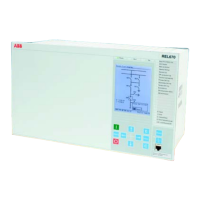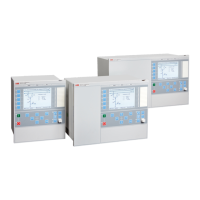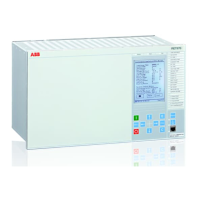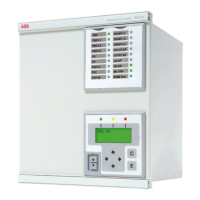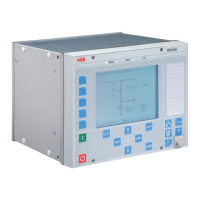7.7.7 Operation principle
M12018-3 v10
The sampled analog phase currents are pre-processed and for each phase current
the RMS value is derived. These phase current values are fed to the thermal
overload protection, one time constant LCPTTR/LFPTTR function. The
temperature is displayed either in Celsius or Fahrenheit, depending on whether
LCPTTR/LFPTTR function is selected.
From the largest of the three-phase currents a final temperature is calculated
according to the expression:
2
final ref
ref
I
T
I
æ ö
Q = ×
ç ÷
ç ÷
è ø
EQUATION1167 V1 EN-US (Equation 31)
where:
I is the largest phase current,
I
ref
is a given reference current and
T
ref
is steady state temperature rise corresponding to I
ref
The ambient temperature is added to the calculated final temperature. If this
temperature is larger than the set operate temperature level, TripTemp, a START
output signal is activated.
The actual temperature at the actual execution cycle is calculated as:
( )
1 1
1
t
n n final n
e
t
D
-
- -
æ ö
Q = Q + Q - Q × -
ç ÷
è ø
EQUATION1168 V1 EN-US
(Equation 32)
where:
Q
n
is the calculated present temperature,
Q
n-1
is the calculated temperature at the previous time step,
Q
final
is the calculated final temperature with the actual current,
Dt
is the time step between calculation of the actual temperature and
t
is the set thermal time constant for the protected device (line or cable)
The actual temperature of the protected component (line or cable) is calculated by
adding the ambient temperature to the calculated temperature, as shown above. The
ambient temperature can be taken from a separate sensor or can be given a constant
1MRK 506 382-UEN A Section 7
Current protection
Line distance protection REL650 2.2 IEC 235
Technical manual
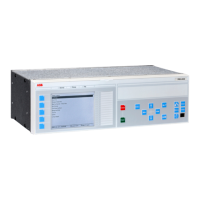
